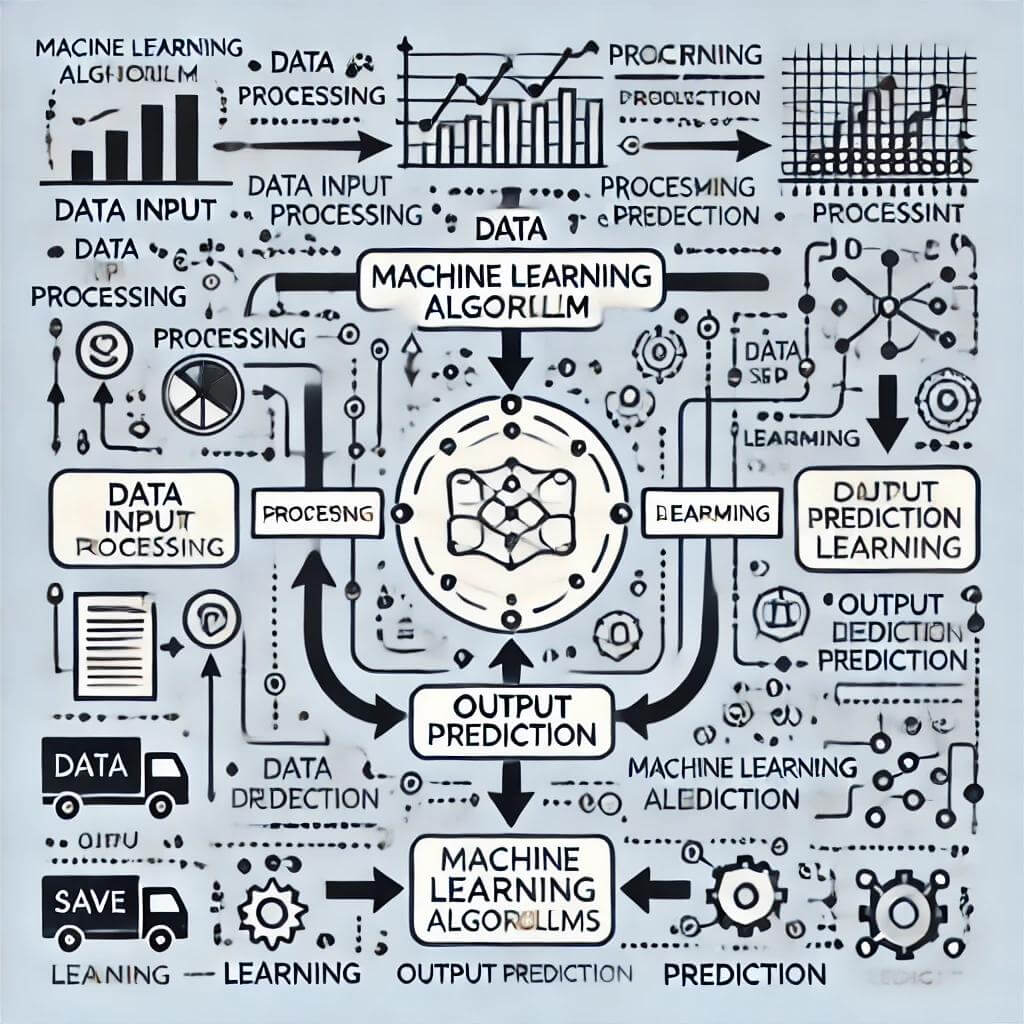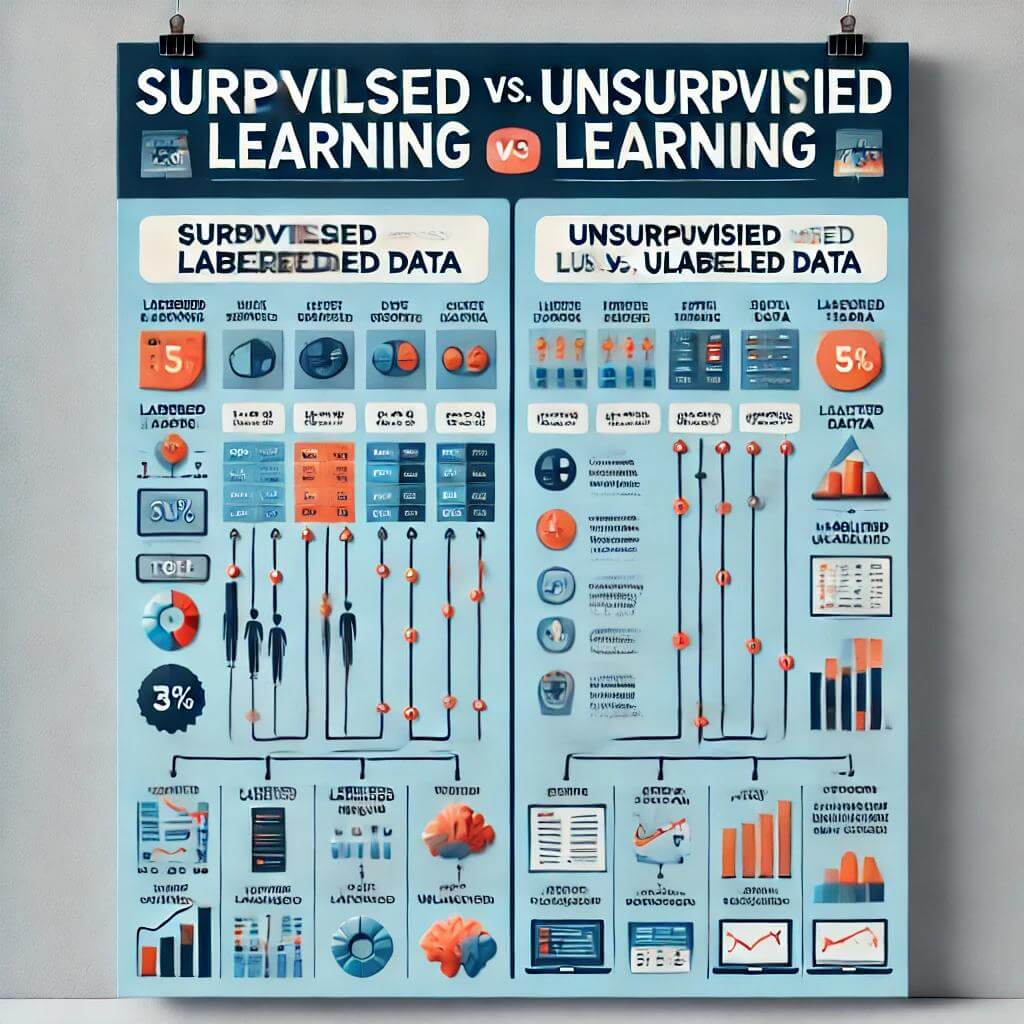What is Machine Learning? Understanding the Basics
Machine learning (ML) is the science of teaching computers to learn from data, enabling them to make decisions and predictions without being explicitly programmed. It’s the backbone of many modern technologies, including self-driving cars, speech recognition, recommendation systems, and fraud detection. This article will break down the essential components of machine learning, delve into key types like supervised, unsupervised, and reinforcement learning, and provide code examples, tables, and more to enrich your understanding.
Definition of Machine Learning
Machine learning is a branch of artificial intelligence that focuses on building systems that can automatically improve over time through data. Traditional programming involves writing explicit instructions for computers to follow. In contrast, machine learning algorithms allow computers to find patterns in data and learn from them without human intervention.
Here’s how it typically works:
- Data Collection: Gathering relevant data for the problem you’re trying to solve.
- Model Training: Feeding the data to an algorithm so it can learn to make predictions.
- Testing and Evaluation: Testing the model on unseen data to evaluate its accuracy.
- Prediction: Using the model to make predictions or decisions on new data.
Code Example: Simple Machine Learning Workflow
from sklearn.model_selection import train_test_split
from sklearn.linear_model import LinearRegression
from sklearn import datasets
# Load a dataset
data = datasets.load_boston()
X, y = data.data, data.target
# Split data into training and testing sets
X_train, X_test, y_train, y_test = train_test_split(X, y, test_size=0.3)
# Train a linear regression model
model = LinearRegression()
model.fit(X_train, y_train)
# Make predictions
predictions = model.predict(X_test)
# Output predictions
print(predictions)
In this example, we use the Boston Housing Dataset to predict house prices based on various features. The Linear Regression algorithm learns the relationships in the training data and then makes predictions.
Supervised Learning
Supervised learning is the most commonly used machine learning approach. In this method, the model learns from labeled data—data that comes with answers (labels). The algorithm is trained to map inputs to the correct output.
How Supervised Learning Works
Supervised learning involves feeding the algorithm examples of input-output pairs. For instance, in email spam detection, the input is the email itself, and the output is whether it’s spam or not. Over time, the model learns to predict the label (spam or not spam) for unseen emails.
Two main tasks in supervised learning are:
- Classification: Predicting a category (e.g., spam or not spam).
- Regression: Predicting a continuous value (e.g., house prices).
Example: Decision Tree Classifier (Code)
from sklearn.tree import DecisionTreeClassifier
from sklearn.datasets import load_iris
from sklearn.model_selection import train_test_split
# Load dataset
iris = load_iris()
X, y = iris.data, iris.target
# Split the dataset
X_train, X_test, y_train, y_test = train_test_split(X, y, test_size=0.3)
# Train a decision tree model
clf = DecisionTreeClassifier()
clf.fit(X_train, y_train)
# Predict the labels
predictions = clf.predict(X_test)
# Output predictions
print(predictions)
In this example, we use the Iris Dataset to classify flowers into three species using a Decision Tree.
Supervised Learning Table
| Algorithm | Type | Use Case | Example |
|---|---|---|---|
| Linear Regression | Regression | Predict continuous outcomes | Predicting house prices |
| Decision Trees | Classification | Classify data into categories | Spam detection |
| Support Vector Machine | Classification | Classify text or image data | Sentiment analysis |
Unsupervised Learning
Unsupervised learning works on unlabeled data, where the system tries to find patterns or relationships without any explicit guidance. This makes it useful for tasks like grouping similar items together, finding hidden patterns, and detecting anomalies.
How Unsupervised Learning Works
Without labeled data, unsupervised learning algorithms find structure in data through clustering, dimensionality reduction, or anomaly detection. The goal is to uncover hidden patterns without pre-assigned labels.
Example: K-Means Clustering (Code)
from sklearn.cluster import KMeans
import numpy as np
# Generate random data
data = np.random.rand(100, 2)
# Train a K-Means model
kmeans = KMeans(n_clusters=3)
kmeans.fit(data)
# Predict the clusters
predicted_clusters = kmeans.predict(data)
# Output predicted cluster labels
print(predicted_clusters)
In this example, we use K-Means to group data points into clusters based on their similarity.
Unsupervised Learning Table
| Algorithm | Type | Use Case | Example |
|---|---|---|---|
| K-Means Clustering | Clustering | Group similar data points | Customer segmentation |
| PCA (Principal Component Analysis) | Dimensionality Reduction | Simplify data by reducing variables | Image compression |
| Isolation Forest | Anomaly Detection | Identify unusual or suspicious data | Fraud detection |
Reinforcement Learning
Reinforcement learning is an area of machine learning where an agent learns by interacting with its environment and receiving rewards or punishments based on its actions. The goal is to maximize the total reward over time.
How Reinforcement Learning Works
The agent performs actions in an environment, and for each action, it receives feedback in the form of a reward or penalty. The agent learns from this feedback and adjusts its behavior to maximize rewards in future actions. Reinforcement learning is particularly useful in dynamic environments where the optimal decision-making strategy is not predefined.
Example: Q-Learning for Game Agents (Code)
import numpy as np
# Initialize Q-table with zeros
Q_table = np.zeros([5, 5])
# Define hyperparameters
alpha = 0.1 # learning rate
gamma = 0.6 # discount factor
# Simulate environment
for episode in range(1000):
state = np.random.randint(0, 5)
# Q-learning algorithm
action = np.argmax(Q_table[state])
reward = np.random.rand()
Q_table[state, action] = (1 - alpha) * Q_table[state, action] + alpha * (reward + gamma * np.max(Q_table[action]))
# Output Q-table
print(Q_table)
In this example, we simulate a simple Q-Learning environment where the agent updates its strategy over time.
Reinforcement Learning Table
| Term | Definition |
|---|---|
| Agent | The learner or decision-maker |
| Environment | The world the agent interacts with |
| Reward | Feedback received after each action |
| Policy | The strategy the agent uses to make decisions |
Types of Machine Learning Algorithms
Here’s an overview of common machine learning algorithms categorized by their learning style:
Supervised Learning Algorithms
- Linear Regression: For predicting continuous values.
- Decision Trees: Used for both classification and regression tasks.
- Support Vector Machines (SVM): Often used in classification tasks.
Unsupervised Learning Algorithms
- K-Means: Clustering algorithm to group similar data points.
- Hierarchical Clustering: Groups data into nested clusters.
Reinforcement Learning Algorithms
- Q-Learning: A model-free reinforcement learning algorithm that uses Q-values to determine optimal policies.
Real-World Applications of Machine Learning
Spam Detection
Machine learning models help filter out spam emails from inboxes by learning patterns in email data, such as subject lines, body content, and sender behavior.
Recommendation Systems
Platforms like Netflix, Spotify, and YouTube use machine learning to recommend content based on your previous interactions. These recommendation engines continuously improve as more data is collected.
Fraud Detection
Financial institutions use machine learning to detect fraudulent transactions by identifying abnormal patterns that deviate from normal behavior.
Conclusion
Machine learning is a vital component of modern artificial intelligence. Whether it’s supervised learning used in spam detection, unsupervised learning in customer segmentation, or reinforcement learning in game AI, machine learning is constantly reshaping industries and making systems smarter and more efficient.




Post Comment